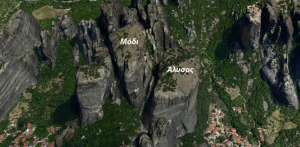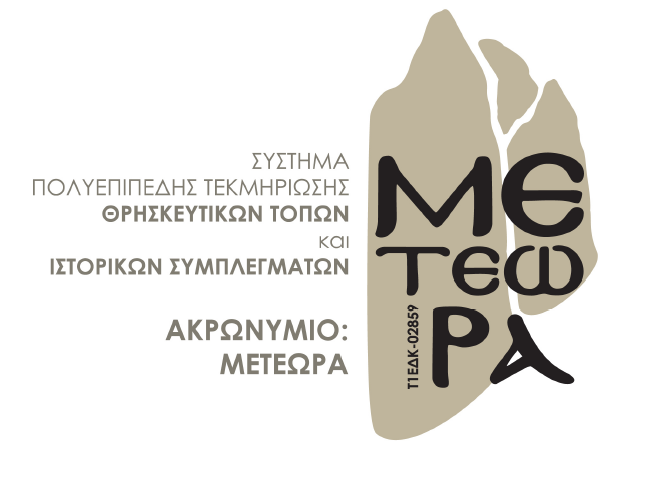The 5dMeteora project aims at the documentation and digitization of a part of the Archeological Site of Meteora. Particularly, the main study area consists of two inaccessible rocks: the rock of St. Modestos (‘Modi’) and the rock of the Chain of Apostle Peter (‘Alyssos’). At the top of both rocks, there are ruins of old Monasteries. Within this project, the Monastery of the St. Modestos is being digitally reconstructed; it is visualized both via the visualization system of the platform and through the Augmented Reality app. The choice of these two rocks lies in the existence of important findings, in the unexplored – until today – establishment and evolution of their monastic community as well as in the special topography and geological morphology. Apart from Modi and Alyssos, the study area includes the majority of monuments in the Holy Site of Meteora, including the six active Monasteries, the Pyxari rock, as well as some hermitages and other cultural heritage sites in the wider area.

Meteora is located near the city of Kalambaka, in the northwestern part of Thessaly, at an altitude of about 600 meters above sea level. It has been declared as an Archeological Site, and more specifically as a “Historic Preserved Monument” with the decision no. 10977/16.5.1967 of the Minister of the Presidency of the Greek Government. This declaration extends the protection of Meteora to the wider area beyond the building complexes of the monasteries. Meteora includes two Protection Zones. It has been declared as a Holy Site (Law 2351/1995), as it includes one of the most important complexes of Orthodox monasteries in Greece, with an active monastic community of a long history. At the same time, it is a special geological phenomenon with giant rocks that were generated 23 million years ago. At the tops of some of these rocks, six Monasteries were built and are still operating, while throughout the area there are some smaller abandoned monasteries and churches of the 14th century. Meteora has been characterized as an UNESCO World Heritage Site (https://whc.unesco.org/en/list/455/), based on the cultural criteria of UNESCO (C 1-5) as well as on a criterion concerning the natural environment (N 7). Meteora has also been proposed as a monument of geological heritage thanks to its important geomorphology. The area of Meteora along with the Antihasia Mountains are included in the European network of protected areas NATURA 2000 with code GR1440003, which is the main European means for the conservation of natural habitats, wild fauna and flora.

